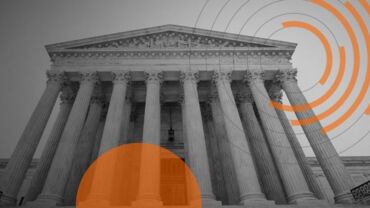Post-pandemic, consumer expectations for delivery of government services have shifted dramatically, leaving many agencies and organizations struggling to keep up
As private sector service providers rapidly deployed tools to empower self-service and omnichannel delivery, the public sector has been much slower to adapt. As the gap widens between the public and private sector in service delivery, how can government agencies and organizations deliver better citizen experiences, while protecting data privacy and not leaving individuals behind?
For many industries, the early days of the pandemic were a combination of services coming to a screeching halt and rapid innovation for delivery of services in new ways that prioritized safety. An assessment of state government Chief Information Officers (CIOs) from 2021 indicated that 94% of CIOs experienced a surge in demand for digital services in 2020 that was directly related to the COVID-19 pandemic.
Post-pandemic, we now have increased our use of technology as a society in new areas of our day-to-day lives — a fact which more than half of individuals interviewed as part of an analysis of digital governance viewed to be directly caused by the COVID-19 pandemic. Participants in this analysis indicated that increased technology use had enhanced individuals’ experiences in banking, shopping, and accessing healthcare; however, experiences had not been enhanced at the same pace in accessing government services. Less than half of participants said they felt U.S. government agencies or organizations were using digital technology effectively for service delivery in the wake of the pandemic.
While the pandemic brought the desire for digital services to the forefront, the end goal of digitization in the years since has been to create better online experiences for citizens. This mindset shift has been reinforced at the federal level, too. A Presidential executive order from 2021 that focused on rebuilding trust in government noted that improving service delivery and customer experience should be “fundamental priorities of the federal government.”
Enhancing user experience through digital governance
Digital service delivery enhances user experience by allowing individuals access to information and services on-demand. Legacy service delivery previously limited response times to government business hours, but technology like artificial intelligence (AI) chat bots can respond to frequently asked questions and help guide users through transactions. This makes services more readily accessible, limits the need for redundant staff interactions, and can reduce wait times both by phone and in-person. Predictive software tools also can encourage users toward more self-service by, for example, generating auto-reminders for users in advance of license or application renewal dates.
Omnichannel service delivery has become ubiquitous in the post-pandemic retail environment. In a government environment, modernized service delivery methods prioritize customer preference and convenience.
A report on government digital transformation aptly describes the future of digital government as frictionless, one in which a proactive approach in understanding consumer needs puts customers at the center by predicting future service needs around life events, rather than putting the responsibility on a user to seek out certain services. It can be a base instinct for those working in government to assume that citizens know what solutions they need, but we must reshape this internal construct in order to appreciate that citizens often understand their unique problem, but not the solutions available to them. Government systems which focus on the citizen perspective of problem-solving are best positioned to deliver frictionless experiences.
At the local government level, an individual registering for a new state identification following a move may soon need services and information such as vehicle registration, voter registration, animal licensing, parking permits, or information on local waste and recycling management. These services are managed by different governmental departments (an internal construct), however, they are all a potential need for a new resident relocating from out of state (a common life event).
Managing customer trust & privacy
Data-driven service delivery within government can predict customer needs, enhance communication outreach, and help organizations measure policy effectiveness. In addition to enhancing customer user experiences, this can also help local governments realize cost savings. The benefits gained through collecting user data come at a price, however — users must trust their local governments to protect their data and to utilize it in a way that brings citizens a direct benefit. An analysis of digital governance found that participants overwhelmingly felt that data collected by governments should be kept private, even if sharing data could enhance service delivery or reduce costs.
Further, use of strong digital identifiers in government service delivery can bring multiple benefits to users. Governments in India, Argentina, and South Korea have deployed digital identifier programs across segments of their populations to better democratize access to pandemic resources. Digital IDs can reduce the need for in-person authentication, avoid the redundancy of providing the same data multiple times across government agencies, and can serve as an additional layer of verification and security to protect data privacy.
Ensuring customers are not left behind
A shift to digital-by-default service delivery risks leaving those without access to technology or those with low technological literacy behind. It is crucially important that customer service can always accommodate those lacking the technological resources or knowledge to navigate self-service or on-demand platforms. By enhancing the user experience and empowering self-service for the majority, the user experiences for those who require hands-on, human interaction in accessing government services will still share positive user experiences.
In summary, while the goal of digital governance is rooted in problem-solving and enhancing customer experience, the experience will look different for each unique customer. Past service delivery was a one-size-fits-all approach, but the future of government service delivery needs to be highly personalized to an individual’s unique problems and preferences.







